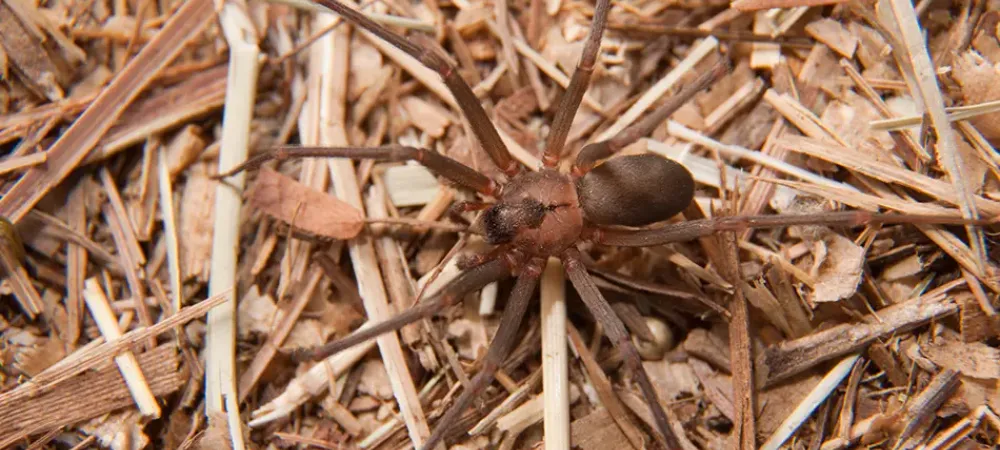A Comprehensive Guide to Brown Recluse Spiders in North Carolina

Brown recluse spiders, also known as Loxosceles reclusa, are a common concern for homeowners, but fortunately, they are not as prevalent in North Carolina as many people fear. While these spiders are more commonly found in the central and southern United States, they can occasionally be found in our state. Understanding how to identify these spiders, prevent bites, and respond to any potential encounters will help you protect your family and home.
What Is a Brown Recluse Spider?
The brown recluse spider is a small, typically brown-colored spider with a distinctive violin- or fiddle-shaped mark on its back. The "neck" of the violin points toward the rear of the spider’s body. While this marking is often the most notable feature for identifying the brown recluse, there are other brown spiders with similar patterns.
Key Features for Identification:
- Size: Adult brown recluse spiders are about 1⁄4-1⁄2 inch in length.
- Eye Arrangement: The key characteristic of a recluse spider is its six eyes arranged in three pairs. Unlike most spiders, which have eight eyes, the brown recluse has this unique arrangement, which is a surefire sign of its identity.
- Color and Marking: The violin-shaped marking is a dark, brownish area on the top of the spider's cephalothorax (head region), with the "handle" pointing toward the rear.
Where Are Brown Recluse Spiders Found in North Carolina?
While brown recluse spiders are not native to North Carolina, they are occasionally found here, though sightings are rare. They are more commonly found in the southern and central United States. In our state, they are typically discovered in dark, dry areas such as attics, cellars, and storage areas where people may not frequent often. Outdoors, they are commonly found under rocks, debris, wood piles, or sheds.
Indoor Hiding Spots:
- Closets
- Cabinets that are seldom used
- Attics and basements
- Storage areas
- Under furniture or inside shoes/boots
Outdoor Hiding Spots:
- Wood piles
- Rock piles
- Sheds or other outdoor structures
How to Prevent Brown Recluse Spiders
Although sightings are rare in North Carolina, it’s still important to take preventative measures to reduce the chances of a spider encounter.
- Declutter Your Home: Keep storage areas, closets, and basements neat and tidy. This will make it more difficult for spiders to find hiding spots.
- Seal Cracks and Gaps: Ensure windows, doors, and vents are sealed properly to prevent spiders from entering your home.
- Use Caution in Dark, Dry Spaces: Be especially careful when reaching into dark or seldom-used areas, such as storage bins, boots, and clothing that has been in closets for a while.
- Outdoor Maintenance: Keep wood piles, rocks, and debris away from the house. Make sure sheds and outdoor storage areas are properly maintained.
What Happens When a Brown Recluse Spider Bites?
While bites from brown recluse spiders are rare, they can occur if the spider feels threatened. Bites often go unnoticed for a few hours but can lead to redness, swelling, and other symptoms. It is important to recognize the signs of a bite and act quickly if necessary.
Symptoms of a Brown Recluse Bite:
- Initial Symptoms (3-8 hours after bite): Redness, swelling, and tenderness at the bite site.
- Blistering: A blister may form around the bite area.
- Necrosis (Skin Death): In severe cases, a necrotic lesion can develop, where the tissue dies, leading to an open wound that may require medical treatment or surgery.
- Other Possible Symptoms: Fever, chills, nausea and vomiting, muscle aches, and/or itching.
If you suspect a recluse spider bite, remember that other conditions, such as infections caused by bacteria like MRSA, can create wounds that look like a brown recluse bite. Always seek medical advice if you are unsure.
What to Do If Bitten By A Brown Recluse
- Clean the Bite Area: Wash the site of the bite with soap and water to help prevent infection.
- Seek Medical Attention: If you experience fever, chills, muscle aches, or notice any blistering or skin necrosis, seek immediate medical attention. Early intervention with antibiotics or medications like Dapsone can prevent the need for surgery.
- Monitor the Symptoms: If symptoms worsen, particularly the appearance of a necrotic lesion, consult your healthcare provider promptly.
- Tetanus Shot: It’s a good idea to make sure your tetanus vaccine is up-to-date after any spider bite.
In the event of a bite, contact North Carolina Poison Control at 1-800-222-1222 for immediate advice and support.
What To Do If You Find a Brown Recluse Spider
If you notice a spider in your home that you suspect to be a recluse, do not try to remove it yourself! Instead, call a pest control professional, like Peeler Environmental, to safely remove it and inspect your home for any nests or other potential threats.
Brown Recluses in North Carolina
While brown recluse spiders are not widespread in North Carolina, it’s still crucial to be aware of them and take preventive measures. Understanding how to identify these spiders, where they may be hiding, and how to respond to bites can help keep you and your family safe. By staying vigilant and seeking medical attention if necessary, you can protect your home from these elusive, yet potentially harmful creatures.
For additional advice or if you need help dealing with a spider infestation, don’t hesitate to contact your local pest control experts for safe and effective solutions. You can also learn more on how to identify common spiders in NC.
Sources:
